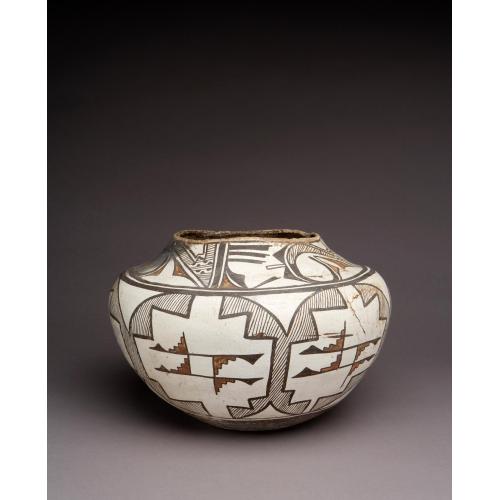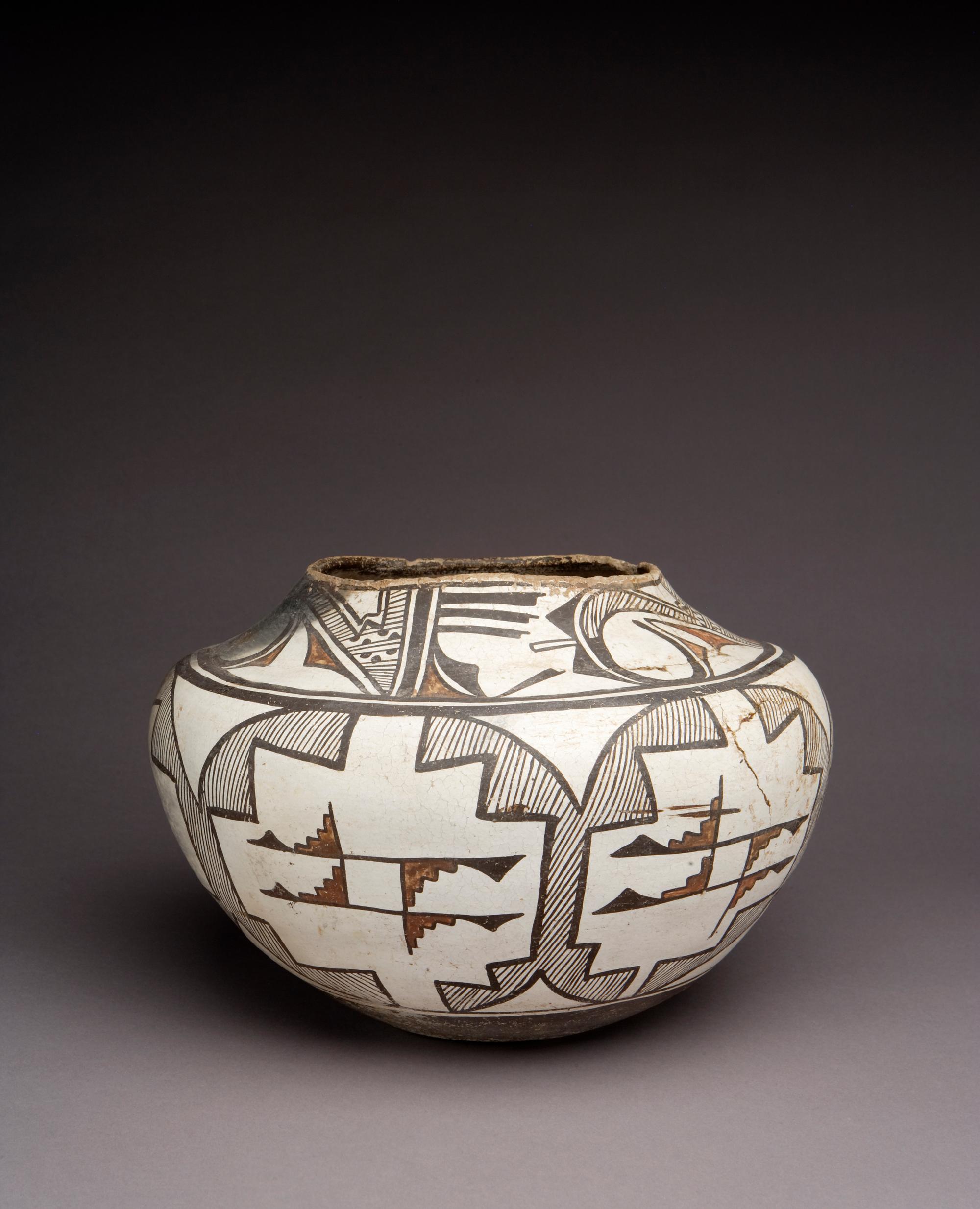
Photograph by Addison Doty. Copyright 2010 School for Advanced Research.
Water jar | K'yabokya de'ele
Date: c. 1890
Artist or Maker: Unknown
Dimensions:
Dimensions: 23.5 × 34.3 cm (9 1/4 × 13 1/2 in.)
Weight: 3.2 kg (6.95 lb.)
Medium: clay | paints
Credit Line: Indian Arts Fund purchase for permanent collection, for inclusion in the Mary Austin Memorial Collection, 1942.
Place Made:
Zuni Pueblo, McKinley County, New Mexico, Southwest, United States, North America
Object Number: IAF.2182
Not on view
Tribal Collection Review RemarksJim Enote and Octavius Seowtewa during collection review visit December 7 and 8, 2010 (Events Record “Collection Review: Zuni Tribe, Review 5”): The jar is heavy for its size and thick walled. The rim is painted black and is somewhat eroded. The neck design has bird heads with red crests, tails, and wing feathers. The birds are filled with rain hatching and dots that may represent hail/seeds/planting holes. The body designs consist of five red and black step cloud/wing combinations arranged a square format enclosed in step cloud frames filled with rain hatching. The base is black and shows heavy wear. There is a large fire cloud on one side of the jar. The jar has some piñon pitch repairs that were likely Native repairs (repairs made while the jar was in use in the community).
The word for a water jar in Zuni is “k'yabokya,” which translates to “water container” in English. The intended use for these jars was to store and carry water, but they could also be used to store other items.
In Collection(s)
The Indian Arts Research Center, in collaboration with Native American community scholars, strives to present accurate collections records. Records may be updated as new information becomes available and is reviewed with the Native American community having cultural affinity to particular items. Please write to iarc@sarsf.org if you have questions or concerns related to the documentation.
